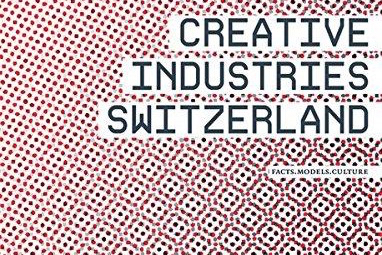From Creative Industries to Creative Economies
Different perspectives on the intersections of culture and economy
While creative industries are defined by business sectors focused specifically on creative production, the creative economy approach emphasises the micro-perspective of various creative actors and occupations, many of which work outside the creative industry submarkets. Traditional divisions have become blurred in a globalized economy.
The limits of “creative industries”
The concept of “creative industries” is firmly established in Switzerland. Its method and approaches are reflected in the first part of this study, which focuses on an analysis of the 13 submarkets that together make up the creative industries. However, we argue in this report that a description of the creative economy as a series of static submarkets alone no longer fully does justice to the dynamic developments in the field. The lines between the submarkets themselves and between the creative industries and other economic sectors have increasingly blurred.
One reason for this is globalization: An approach defined primarily by its business sectors has the problem that it may mean an entirely different thing in a city in Asia or a particular region in Europe. This makes discussion, exchange of ideas and collaboration more difficult. The narrow focus on nationally relevant submarkets thus limits the promising global dimension of the creative economy – from the artist working in her studio to the boss of a major start-up in Seoul.
An exchange with people from other economic sectors also shows that “creative” activity is not an exclusive characteristic of the creative industry sectors. Creative skills are in demand all across the economy, from a laboratory in the pharmaceutical industry to a bank’s novel innovation platform.
These global constellations involve constant intersections of the fields of culture, economy and technology. Our approach to creative economy should reflect this by finding new ways to describe and interpret the situation.
“Creative economy”: A new focus on creative actors and creative occupations
One way of reframing the debate is explored in Part 2 of this report. It responds to the trends described above by focusing not on business sectors but on creative actors and occupations within the overall economy.
For the first time in Switzerland we undertook an analysis of creative economy that no longer focused on creative industry business sectors, but looked instead at the labour patterns of actors within creative occupations. In order to investigate the Swiss markets from this perspective, we developed entirely new methodologies that cross-reference different sets of data on the macro-level of business statistics and the micro-level of labour force surveys. Compared to the established approaches and surveys regarding the submarkets, this is still in an experimental phase. However, there are some clear results: Almost as many people work as so-called creatives outside the established creative industry sectors as are employed within them.
This strongly suggests that the creative industries approach no longer fully accounts for the current realities of the Swiss creative economy.
Advantages of the “creative economies” approach
While the above indicates a paradigm shift from focusing on particular sectors (creative industries) to looking at the whole economy as involving creative actors and occupations (creative economy), the authors of this report argue that both concepts simplify to some extent. We should not assume that any single conceptual model can give us an accurate or sensitive representation of the many complex intersections between culture and economy. Their preferred term, creative economies, suggests more diversity. It combines different approaches and multiple points of view to come up with models that reflect this complexity.
Thinking in terms of creative economies enables a more fine-tuned, precise description, analysis and interpretation of key themes such as value creation, modes of cooperation, creation processes, and particularly the practices and processes of involved actors on a micro level.
The benefits of this actor-centred approach allows us to take account of patterns, activities and forms of value creation for a whole range of actors in the expanded field of the creative industries and beyond: entrepreneurs and politicians, researchers and cultural managers, curators and artists engaged in projects, initiatives, organisations, networks and institutions in the fields of research, entrepreneurship, culture and politics.




